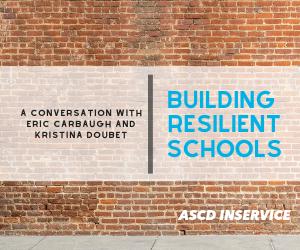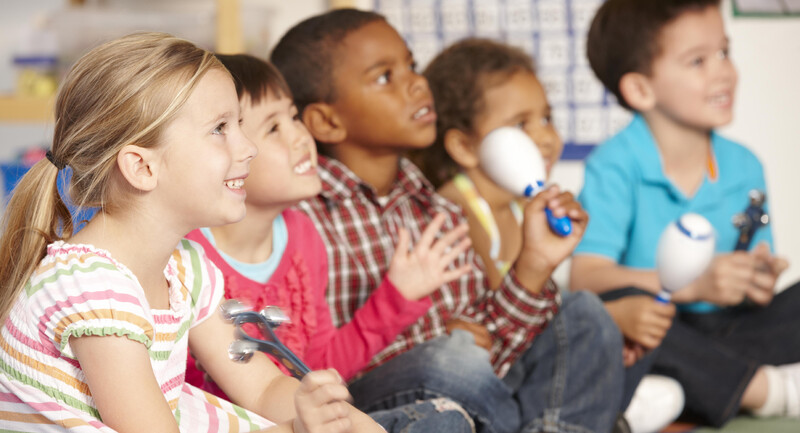As a school leader, fostering a sense of equitable belonging for all students is paramount, which draws my attention to the word "unity" embedded within the word "community." Unity among a community can be created through shared purpose, mutual respect, and recognition of our interdependence. And we should not let a community be built on chance: Educators have the opportunity to intentionally design a positive and caring community that strives for inclusion and acceptance of all of its members. When educators embed moments of social-emotional learning in classrooms, they give students the tools to build these strong and positive connections with peers. Community Building Circles (CBCs) are one such tool to help young adults cultivate meaningful interpersonal relationships, foster a sense of belonging, and nourish their intellectual agency.
Educators know that creating a safe environment for social-emotional learning can be tricky with 32+ adolescents in a 30' x 30' classroom. Savvy teachers understand the importance behind the consistency of classroom routines and how predictability can provide a sense of safety for students. In Shane Safir's "Cultivating a Pedagogy of Student Voice," she describes "Circle Up" as an activity that supports consistent relationship-building and creates a safe space for learning:
"[R]eshaping our classrooms into circles communicates equality of voice and membership in the community. Circle gatherings, a practice from Indigenous ways of being, represent the village coming together for dialogue and signal to the learner: 'You belong here, just as everyone around you belongs here. I want to see your face and hear your voice.'"
In this way, circle-based practices can create equitable classroom spaces for student voice and choice, helping educators pivot away from a didactic "banking model" of knowledge.
Community Building Circles in Action
A Community Building Circle is a practice inspired by the work of Roxann Kriete and Carol Davis from The Morning Meeting Book (Center for Responsive Schools, 2017). A CBC is a daily, whole-group gathering designed to build community across differences.
As described previously in my blog post, "Integrated SEL Instruction in Secondary Classrooms," a CBC consists of 1) an Inclusive Share, where everyone verbally participates in response to a prompt; 2) an Open Share, where students voluntarily share a quote, image, idea, or other contribution with the class; and 3) an Activity that engages the whole class in a shared purpose.
The positive and friendly ritual of CBCs helps make a classroom a safe space for students to meet each other and build trusting relationships that will transfer to productive learning. Here are some tips on how to implement and sustain Community Building Circles:
Launching CBCs
Circles are designed to establish and support a positive classroom community. First, the teacher serves as an uplifting, energetic facilitator and actively participates with students in circle prompts and activities. When the teacher participates, it demonstrates to students the teacher's willingness to model vulnerability and distribute voice equitably across the classroom.
When the teacher participates, it demonstrates to students the teacher's willingness to model vulnerability and distribute voice equitably.
The teacher explains the purpose, goals, and the "why" of circles. For example, a class will review the importance of CBCs as a whole group gathering designed to build community through a format of greeting, sharing, and activity in an effort for individuals to create and sustain a safe space to foster positive relationships.
In conversation with students, the teacher develops and reviews agreements and behavioral expectations for circles as needed. Each class generates nuanced agreements authentic to the class, yet the teacher can continue to reiterate that all actions must be safe, respectful, and responsible.
To help facilitate behavioral expectations, the teacher explains using a "talking piece" in the circle. The talking piece supports both sharing and listening; whoever holds the talking piece shares while everyone else listens.
Ongoing Implementation
It is important to devote time weekly to CBCs for the practice to become routine. Our school implements CBCs every period of every day during the first week of school and once a week in each period after that. When a crisis impacts our school community, our school turns to CBCs to provide a safe space for students and staff to process together instead of in ineffective silos. Our school also has an Extended Time/Advisory session every week where we provide content for teachers and students to facilitate a CBC on relevant topics in our school, community, and society.
Our school is steadfast in implementing circles as an SEL practice to forge connections. We strive to model prosocial behaviors as adults by offering frequent and ongoing feedback using nonverbal (eye contact, smiles, etc.) and verbal ("Thank you for sharing," "I appreciate you lifting that up") genuine, positive praise. This can foster confidence by affirming positive interactions and engagement with others. To sustain positive and respectful interactions in CBCs, teachers may need to remind students of expectations and redirect any undesired behaviors. It's important to consistently reinforce accountability steps—for example, if a student needs a silent (discreet) correction or there is a need to initiate a check-in/check-out protocol for the student. The goal is for all students in the class to be engaged in every CBC.
Community Building Circles are the heart work every student, every classroom, and every school is looking for right now.
As with anything in the classroom, if the teacher is genuinely excited, young people will be excited, too. Community Building Circles are the heart work every student, every classroom, and every school is looking for right now.
Collective Well-Being
The routine of facilitating CBCs can help establish a classroom founded on respect and care. This repeated practice provides a positive model for fostering collective well-being while allowing everyone to get a pulse on the wellness of all members of the classroom. A CBC can evoke three powerful aspects of well-being: authenticity, healing, and joy.
Authenticity: A circle facilitated with intentional and timely prompts can provide the space for a young adult to feel safe being authentically vulnerable. For example, an Inclusive Share nudges students to speak their voice while scaffolding to greater confidence when sharing in a group setting. CBCs offer students agency and choice in how they respond, helping them build confidence in self-expression. Open Shares, for instance, can allow students to bring up hard-to-express feelings about current events of their choosing, giving them a scaffold for expressing their individual perspectives and opinions. This level of agency builds self-actualization by elevating students' confidence and candor.
Healing: As humans navigate ever-evolving complex ecosystems (person-to-person, classroom, school, home, city, etc.), conflict will arise. A CBC can serve multiple purposes, and healing can be a healthy and cathartic moment when a student shares from a vulnerable place. A CBC provides a space where young people can voice perspectives on harm caused by an action in the classroom or a tragedy in the larger community. Often, teachers may avoid situations like this because they aren't certain where the conversation may go, but educators can serve as facilitators of a discussion—not to provide counseling or on-the-spot guidance but to affirm students' feelings. This is a powerful way to build trust and rapport between members of the circle.
Joy: It is important to find moments of joy with students to create genuine positive relationships across the classroom. Brief, 5-to-10-minute activities like those in CBCs can support your classroom community. Here are some activities I've tried that have made even my 16-year-old students laugh:
- Four Corners: Number four corners in your room from 1-4. Pick one student to be “it” to face a wall not close to any of the four corners. Have the rest of the students silently move to one of the four corners and then tell the “it” student to pick a number 1-4. All students in the picked corner are out and have to return to their seats. Give students a chance to switch corners and repeat the process over and over until one person is left standing.
- Rock, Paper, Scissors, Sprinkle: Students turn to the person closest to them and challenge them to rock, paper, scissors (just once). The loser then has to follow the winner and chant their name. The winner then looks for another student to challenge. This continues on until there is only one person left standing and the whole class is cheering their name.
Schoolwide Community Impact
Not only can Community Building Circles enhance relationships in the classroom, but they can also impact culture and climate schoolwide. CBCs can increase student-to-school connectedness. Students who foster positive relationships and interactions can grow their affiliation and engagement with the school. CBCs can:
- Support students' daily attendance as connections to peers and classes increase.
- Promote and support relationship-building with peers (meeting new people, growing empathy for others, and building respect for diverse perspectives).
- Increase engagement with school (for example, attending the upcoming school basketball game or taking positive risks like trying out for the Spring play).
Community is what brings our differences together, and it's where our collective care for each other's well-being begins. Community Building Circles serve as one practice that can truly build equitable belonging for all students across classrooms and beyond.








